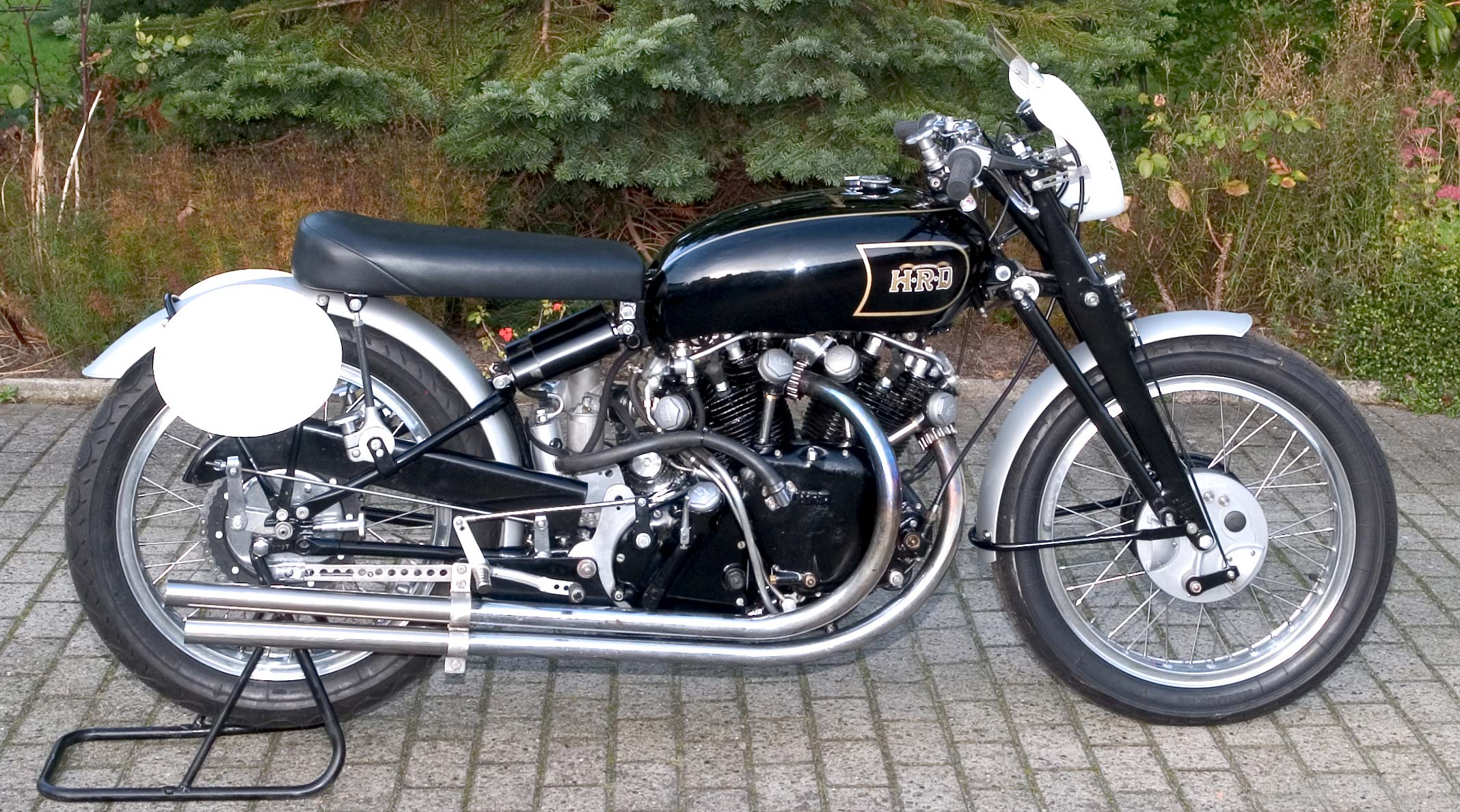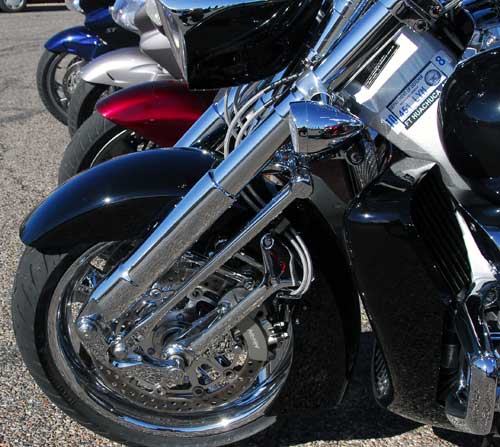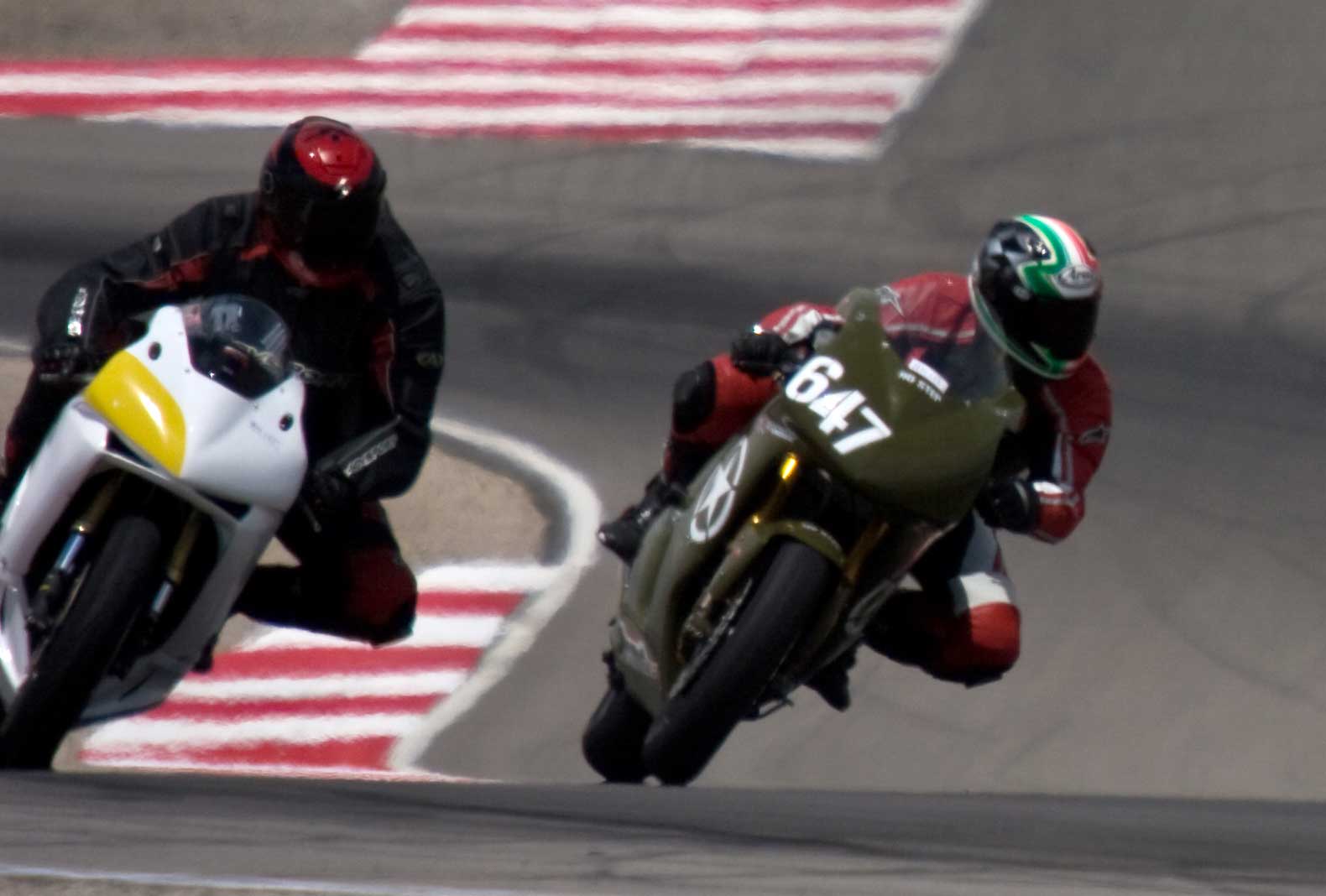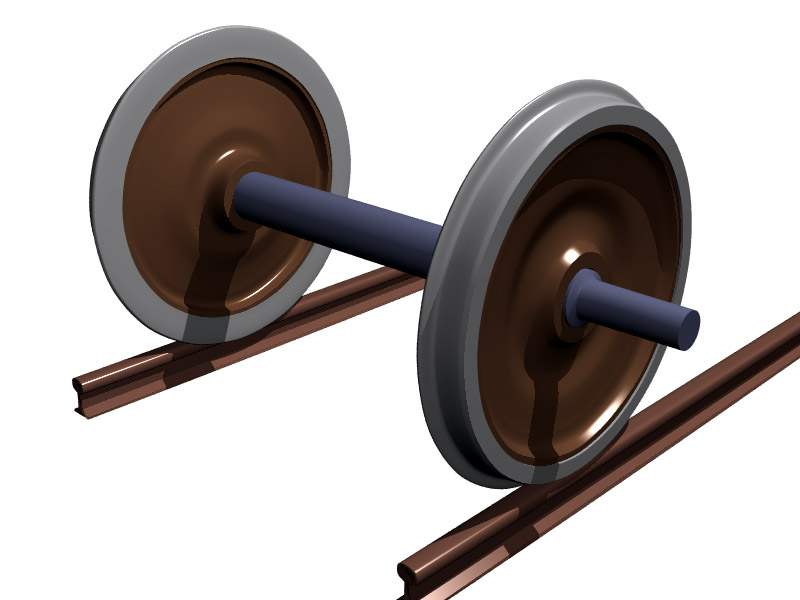|
Monoshock
A motorcycle's suspension serves a dual purpose: contributing to the vehicle's handling and braking, and providing safety and comfort by keeping the vehicle's passengers comfortably isolated from road noise, bumps and vibrations. The typical motorcycle has a pair of fork tubes for the front suspension, and a swingarm with one or two shock absorbers for the rear suspension. Front suspension The most common form of front suspension for a modern motorcycle is the telescopic fork. Other fork designs are girder forks, suspended on sprung parallel links (not common since the 1940s) and bottom leading link designs, not common since the 1960s. Some manufacturers (e.g. Greeves) used a version of the swinging arm for front suspension on their motocross designs. A single-sided version of the idea is also used in motor scooters such as the Vespa. The hub-center steering as developed by Ascanio Rodorigo, on a concept associated to Massimo Tamburini is a complex front swingarm altern ... [...More Info...] [...Related Items...] OR: [Wikipedia] [Google] [Baidu] |
Bimota Tesi
The Bimota Tesi (''translated: "Thesis"'') is a motorcycle model in the superbike class, produced by the Bimota company of Italy. It is distinctive for its front wheel being mounted via a Swingarm, swinging arm arrangement with hub-center steering, unlike the telescopic forks more common in modern motorcycles. Summary While the prototype Bimota Tesi was unveiled in 1983, it was not until 1990 that a road-legal version was commercialized—the Tesi 1/D. The lineage was discontinued in 1994. The model line resurfaced in 2002 with the Tesi 2/D, developed by an Italian Tuner (radio), tuner who marketed it under his name (Vyrus 984 C³ 4V). This was followed in 2007 by the Tesi 3/D, ensuring the model's continued existence. The main innovation of the Bimota Tesi is its use of a swingarm and hub-center steering system instead of a conventional telescopic fork. This design is intended to eliminate the "dive" effect of traditional forks under braking and to provide improved stability. M ... [...More Info...] [...Related Items...] OR: [Wikipedia] [Google] [Baidu] |
Honda TRAC
A motorcycle's suspension serves a dual purpose: contributing to the vehicle's handling and braking, and providing safety and comfort by keeping the vehicle's passengers comfortably isolated from road noise, bumps and vibrations. The typical motorcycle has a pair of fork tubes for the front suspension, and a swingarm with one or two shock absorbers for the rear suspension. Front suspension The most common form of front suspension for a modern motorcycle is the telescopic fork. Other fork designs are girder forks, suspended on sprung parallel links (not common since the 1940s) and bottom leading link designs, not common since the 1960s. Some manufacturers (e.g. Greeves) used a version of the swinging arm for front suspension on their motocross designs. A single-sided version of the idea is also used in motor scooters such as the Vespa. The hub-center steering as developed by Ascanio Rodorigo, on a concept associated to Massimo Tamburini is a complex front swingarm altern ... [...More Info...] [...Related Items...] OR: [Wikipedia] [Google] [Baidu] |
Suspension (motorcycle)
A motorcycle's Suspension (vehicle), suspension serves a dual purpose: contributing to the vehicle's handling and braking, and providing safety and comfort by keeping the vehicle's passengers comfortably isolated from road noise, bumps and vibrations. The typical motorcycle has a pair of fork tubes for the front suspension, and a swingarm with one or two shock absorbers for the rear suspension. Front suspension The most common form of front suspension for a modern motorcycle is the telescopic Motorcycle fork, fork. Other fork designs are girder forks, suspended on sprung parallel links (not common since the 1940s) and bottom leading link designs, not common since the 1960s. Some manufacturers (e.g. Greeves) used a version of the swinging arm for front suspension on their motocross designs. A single-sided version of the idea is also used in motor scooters such as the Vespa. The hub-center steering as developed by Ascanio Rodorigo, on a concept associated to Massimo Tamburin ... [...More Info...] [...Related Items...] OR: [Wikipedia] [Google] [Baidu] |
Triple Clamp
A telescopic fork is a form of motorcycle front suspension whose use is so common that it is virtually universal. The telescopic fork uses fork tubes and sliders which contain the springs and dampers. The main advantages of the telescopic fork are that it is simple in design and relatively cheap to manufacture and assemble, and that it is lighter than older designs using external components and linkage systems. Telescopic forks sometimes have gaiters to protect the fork tubes from abrasion and corrosion. A more modern (and more expensive) version of the conventional telescopic fork is the inverted or "USD" (upside-down) fork. BMW's patented telelever front suspension appears at first glance to be conventional telescopic fork, but the fork tubes contain neither springs nor damping. Instead, a wishbone and an inboard monoshock perform suspension duties, and the forks serve to locate the front wheel and control steering. History The first production motorcycles with hydrau ... [...More Info...] [...Related Items...] OR: [Wikipedia] [Google] [Baidu] |
Fork Tube
A motorcycle fork connects a motorcycle's front wheel and axle to its frame, typically via a yoke, also known as a triple clamp, or triple tree, which consists of an upper yoke joined to a lower yoke via a steering stem, a shaft that runs through the steering head, creating the steering axis. Most forks incorporate the front suspension and front brake, and allow the front wheel to rotate about the steering axis so that the motorcycle may be steered. Most handlebars attach to the top clamp in various ways, while clip-on handlebars clamp to the fork tubes, either just above or just below the upper triple clamp. The fork and its attachment points on the frame establish the critical geometric parameters of rake and trail, which play a major role in defining how a motorcycle handles and dives during braking. While the standard telescopic fork arrangement is found with few major differences among mainstream street motorcycles since the 1970s, historically there have been many varia ... [...More Info...] [...Related Items...] OR: [Wikipedia] [Google] [Baidu] |
Motorcycle Fork
A motorcycle fork connects a motorcycle's front wheel and axle to its motorcycle frame, frame, typically via a yoke, also known as a triple clamp, or triple tree, which consists of an upper yoke joined to a lower yoke via a steering stem, a shaft that runs through the steering head, creating the steering axis. Most forks incorporate the front Suspension (motorcycle), suspension and front brake, and allow the front wheel to rotate about the steering axis so that the motorcycle may be steered. Most motorcycle handlebar, handlebars attach to the top clamp in various ways, while clip-on handlebars clamp to the fork tubes, either just above or just below the upper triple clamp. The fork and its attachment points on the frame establish the critical geometric parameters of rake and trail, which play a major role in defining how a motorcycle handles and Suspension (motorcycle)#Brake dive, dives during braking. While the standard telescopic fork arrangement is found with few major differe ... [...More Info...] [...Related Items...] OR: [Wikipedia] [Google] [Baidu] |
Trail Braking
Trail braking is a driving and motorcycle riding technique where the brakes are used beyond the entrance to a turn (turn-in), and then gradually released (trailed off). Depending on a number of factors, the driver fully releases brake pressure at any point between turn-in and the apex of the turn. Motorcycling In applying this technique, motorcycle riders approach turns applying front brakes to reduce speed. As they enter the turn, they slowly ease off the brakes, gradually decreasing or trailing off the brakes as motorcycle lean increases. This is done for several reasons. First, it gives more traction because the downward force on the front tire is increased by load transfer. Second, as the brakes are applied and the weight shifts forward, the forks are compressed. The compression of the forks changes the motorcycle's steering geometry, decreasing stability in a way that makes the motorcycle more apt to lean and more quickly change direction. Third, decreasing speed decre ... [...More Info...] [...Related Items...] OR: [Wikipedia] [Google] [Baidu] |
Bicycle And Motorcycle Dynamics
Bicycle and motorcycle dynamics is the science of the motion of bicycles and motorcycles and their components, due to the forces acting on them. Dynamics falls under a branch of physics known as classical mechanics. Bike motions of interest include balancing, steering, braking, accelerating, suspension activation, and vibration. The study of these motions began in the late 19th century and continues today. Bicycles and motorcycles are both single-track vehicles and so their motions have many fundamental attributes in common and are fundamentally different from and more difficult to study than other wheeled vehicles such as dicycles, tricycles, and quadracycles. As with unicycles, bikes lack lateral stability when stationary, and under most circumstances can only remain upright when moving forward. Experimentation and mathematical analysis have shown that a bike stays upright when it is steered to keep its center of mass over its wheels. This steering is usually supplied b ... [...More Info...] [...Related Items...] OR: [Wikipedia] [Google] [Baidu] |
Axle
An axle or axletree is a central shaft for a rotation, rotating wheel and axle, wheel or gear. On wheeled vehicles, the axle may be fixed to the wheels, rotating with them, or fixed to the vehicle, with the wheels rotating around the axle. In the former case, bearing (mechanical), bearings or Bushing (bearing), bushings are provided at the mounting points where the axle is supported. In the latter case, a bearing or bushing sits inside a central hole in the wheel to allow the wheel or gear to rotate around the axle. Sometimes, especially on bicycles, the latter type of axle is referred to as a ''spindle (tool), spindle''. Terminology On cars and trucks, several senses of the word ''axle'' occur in casual usage, referring to the shaft itself, its housing, or simply any transverse pair of wheels. Strictly speaking, a shaft that rotates with the wheel, being either Bolt (fastener), bolted or rotating spline, splined in fixed relation to it, is called an ''axle'' or ''axle shaft ... [...More Info...] [...Related Items...] OR: [Wikipedia] [Google] [Baidu] |
Damping Ratio
In physical systems, damping is the loss of energy of an oscillating system by dissipation. Damping is an influence within or upon an oscillatory system that has the effect of reducing or preventing its oscillation. Examples of damping include viscous damping in a fluid (see Viscosity, viscous Drag (physics), drag), Friction, surface friction, radiation, Electrical resistance and conductance, resistance in electronic oscillators, and absorption and scattering of light in optical oscillators. Damping not based on energy loss can be important in other oscillating systems such as those that occur in ecology, biological systems and Bicycle_and_motorcycle_dynamics#Lateral_motion_theory, bikes (ex. Suspension (mechanics)). Damping is not to be confused with friction, which is a type of dissipative force acting on a system. Friction can cause or be a factor of damping. Many systems exhibit oscillatory behavior when they are disturbed from their position of static equilibrium. A mass su ... [...More Info...] [...Related Items...] OR: [Wikipedia] [Google] [Baidu] |
Honda Valkyrie
The Honda Valkyrie is a motorcycle that was manufactured by Honda from 1997 to 2003. It was designated GL1500C in the US market and F6C ("Flat Six Custom") in other markets. In the 1990s there was a resurgence of interest in Cruiser (motorcycle), cruiser motorcycles, that generally feature a V-twin engine. The idea of an American cruiser styled motorcycle featuring a flat six engine came from Josef Boyd. The Valkyrie engine is a Water cooling, liquid-cooled, horizontally opposed flat-six engine shared with Honda's Honda Gold Wing, Gold Wing 4th generation model, unlike the V-twin engine commonly found on Cruiser (motorcycle), "cruiser" style motorcycles. In its transplant from the Honda Gold Wing, Goldwing, the most notable engine changes were the camshaft and the change to six individual 28 mm carburetors, one for each cylinder, changes which increased horsepower, power and torque. The Valkyrie was offered with a reverse gear in Japan. The Valkyrie was made in the United ... [...More Info...] [...Related Items...] OR: [Wikipedia] [Google] [Baidu] |










